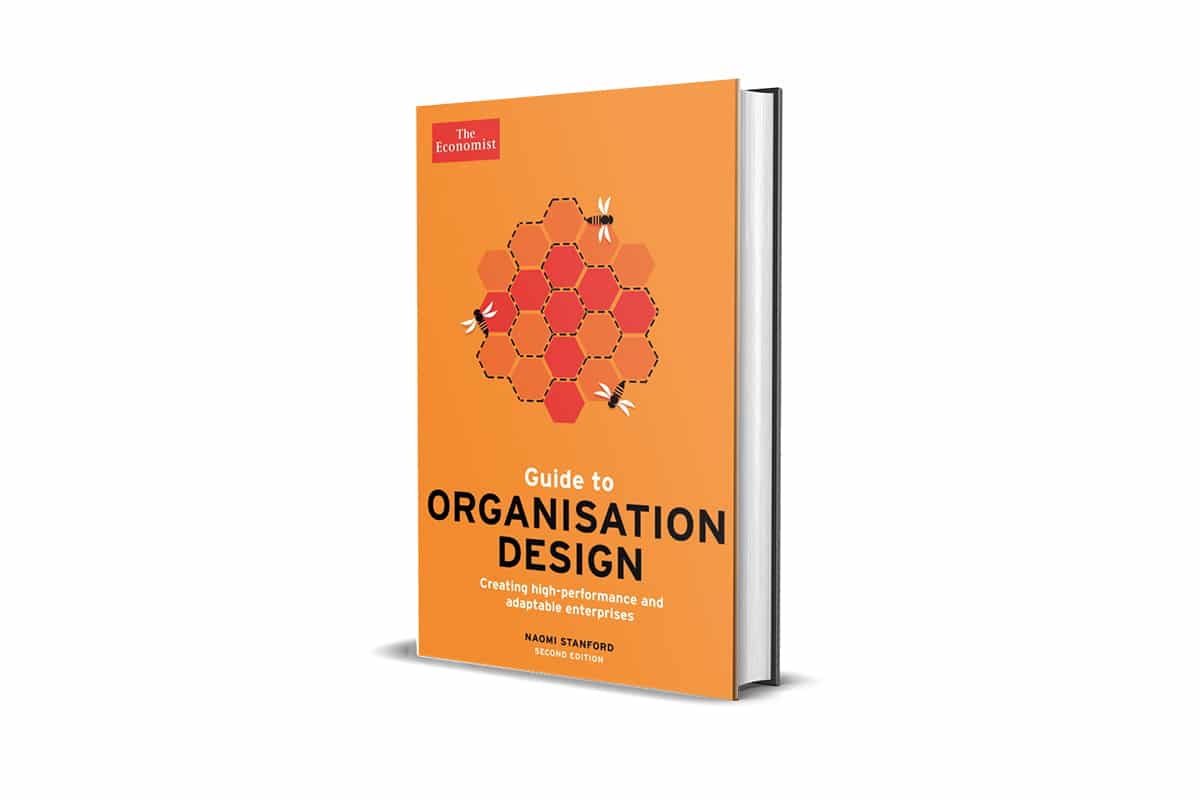Genre: Management
By
Paperback | 352 pp. | Economist Books | 26/02/2015 | 2nd Edition
Buy on Amazon
The Economist Guide to Organisation Design by Naomi Stanford is a very well written and documented handbook on Organisation Design. Its subtitle Creating high-performing and adaptable enterprises immediately hints at the focus the author gives to the book, which is not just a list of methods and tools, but rather gives direction on a sound methodology to design organisations.
I cannot compare this second edition with the previous ones, but it is evident that there is an effort to have a contemporary view on the topic of organisational design, including most recent trends and ideas.
This Guide is not meant to give all the tools that are needed for a practitioner to be able to actually perform an entire Org Design project but gives a very sound idea of the sequence of event. It turns to be the perfect tool to be used with managers especially before starting a change journey. As well as it is a very good tool for all those HR professionals that never had the chance to have formal training in ord Design.
Already from the beginning, Naomi Stanford is very clear about what Organisation Design is (or should be). Bold is mine.
Six principles underlie effective and reflective organisation design:
- Organisation design is driven by the business strategy and the operating context (not by a new IT system, a new leader wanting to make an impact, or some other non-business reason).
- Organisation design means holistic thinking about the organisation: its systems, structures, people, performance measures, processes and culture, and the way the whole operates in the environment.
- Designing for the future is a better bet than designing for now.
- Organisation design happens as much through social interactions and conversations as through planning.
- Organisation design is not to be undertaken lightly: it is resource intensive even when it is going well.
- Organisation design is a fundamental, continuing process, not a repair job.
I can’t agree more about each one of these statements. Especially on the link with business strategy, as well as on the fact that it is not a repair job. The book is also very clear that Organisation Charts are only one aspect of the work (something we’ve already spoken about).
Organisations that are designed with the close involvement of stakeholders are more likely to be effective than those that are designed in a closed room by a few people.
Naomi Stanford, The Economist Guide to Organisation Design, page 35
Particularly interesting is chapter 4, which looks at the planning and sequencing of the Organisation Design work. it focuses on the Business Case for Change as a key milestone for the initiation of such an endeavour. Chapter 5 looks at measurement, an often neglected phase in many “homemade” organisation design changes. Chapter 6 looks at stakeholder engagement, an essential component of driving adoption and change. Chapter 7 and 8 look at leadership and culture, the two elements that “make or break” the change once the organisational design is being implemented.
The last chapter is dedicated to Continuous Design, the idea that Organisation Design essentially never finishes. Which is the main reason why it is important to study Organisation Design. As an HR professional, and as a Manager, with the rate of transformation that is happening in the external environment, you need to constantly assess and adapt your organisation over time.
Formal case studies as well as frequent practitioner tips, give the book a lively rhythm and practical touch, making it pleasant reading.
To summarise, it is the perfect book for any manager or HR professional who needs to understand what Organisation Design is. For sure important ahead of a change effort or a redesign, I do think it is relevant for any Manager also to learn how much all the elements of organisations are connected. Way too often we see the negative impacts of adding a layer to an organisation, or changing a model, without the relevant considerations of all its ripple effects. We need to treat organisations as live organisms, and as such, we need to understand them thoroughly.

Genre: Management | Rating: 5/5
Paperback | 352 pp. | Economist Books | 26/02/2015 | 2nd Edition
ISBN: 9781781253106
Buy on Amazon

[…] Chart is not the main aim of Organisation Design. I’ve also recently reviewed the Guide on Organisation Design by Naomi Stanford, a great book to start understanding what Organisation Design is at a […]
[…] the first step for Organisation Design (Naomi Stanford covers the most known of these in her Guide to Organisation Design). Why this? Well, the reason is simple: in many cases when you are approaching an organisation […]
[…] of today, that needs to reinvent entirely, as this translates into a continuous design, similar to what is proposed by Naomi Stanford but requires many more tools and a truly systemic view of change. After all, we have seen some […]
[…] which always analyse also broad facts from a Design perspective. She has written several books (I have reviewed her Guide to Organisation Design) and is also very active on […]